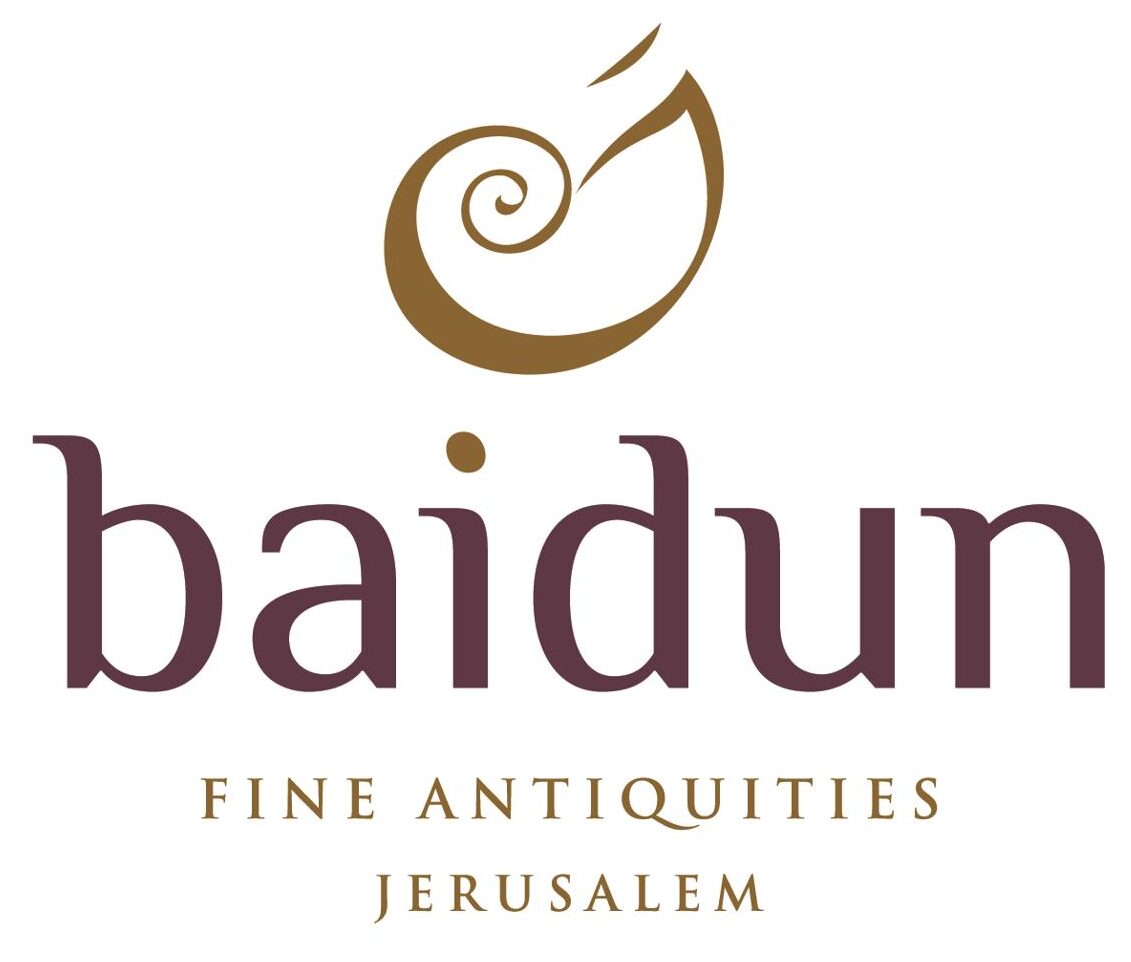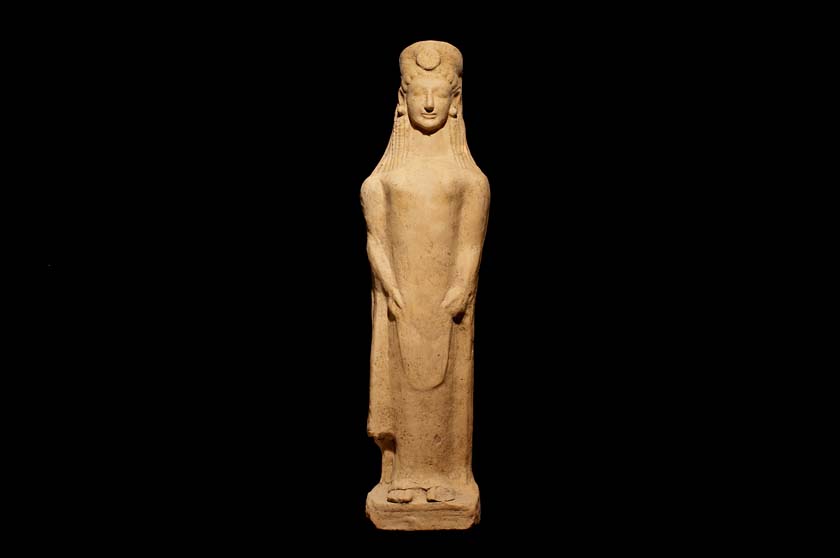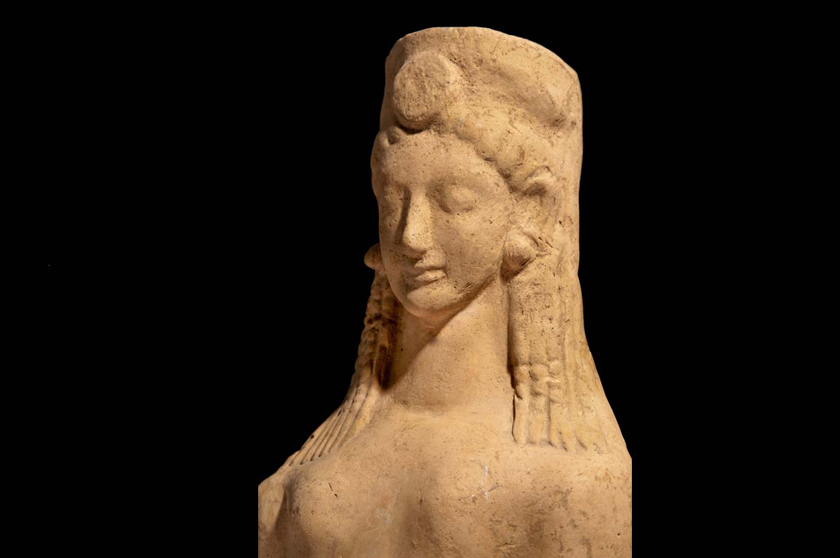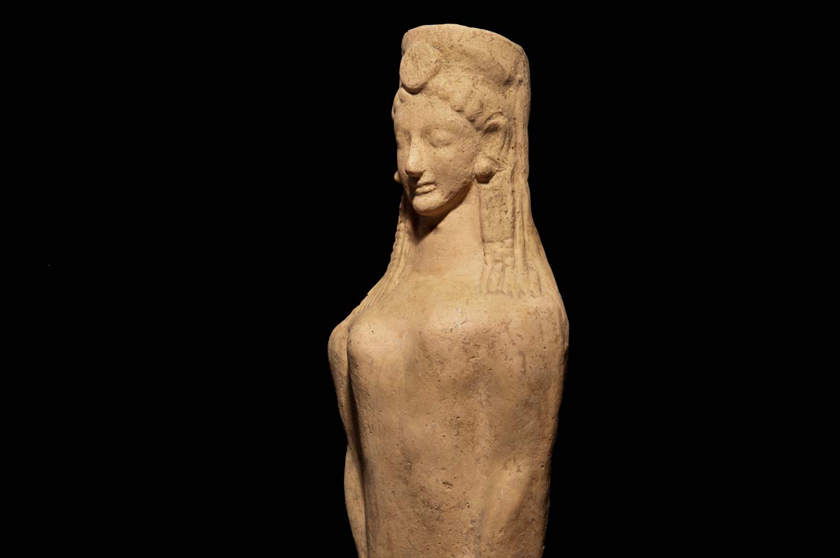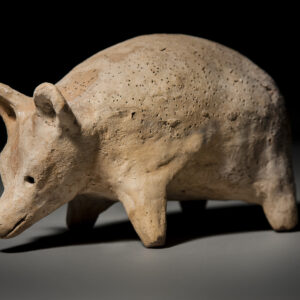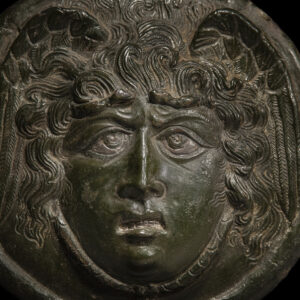This charming example of an Archaic Kore displays the artist’s attention to drapery and form. This piece is modeled after statues, such as the contemporary marble korai from the Acropolis and East Greece. The end result is a well-composed, pleasing terracotta votive that would have graced the altar of a temple as a dedication to a goddess, symbolizing eternal service and worship.
The Kore, is a substantial figure, modeled in the round. The head sits atop of strong, rounded shoulders that flow gracefully down to the trunk of the body. The three-dimensional qualities of the cast are conveyed through the solid, rounded masses of the body and the head. The figure is standing upright.
The Kore wears a flowing chiton with a shorter himation, or mantle, on top. The folds on the gathered skirt and the drape of the himation create the effect of parallel diagonals, which, along with the asymmetrical posture, help combat the strict, static nature of the stiff frontal pose. Underneath the cloth, the curves of the breasts and legs are subtly suggested.



